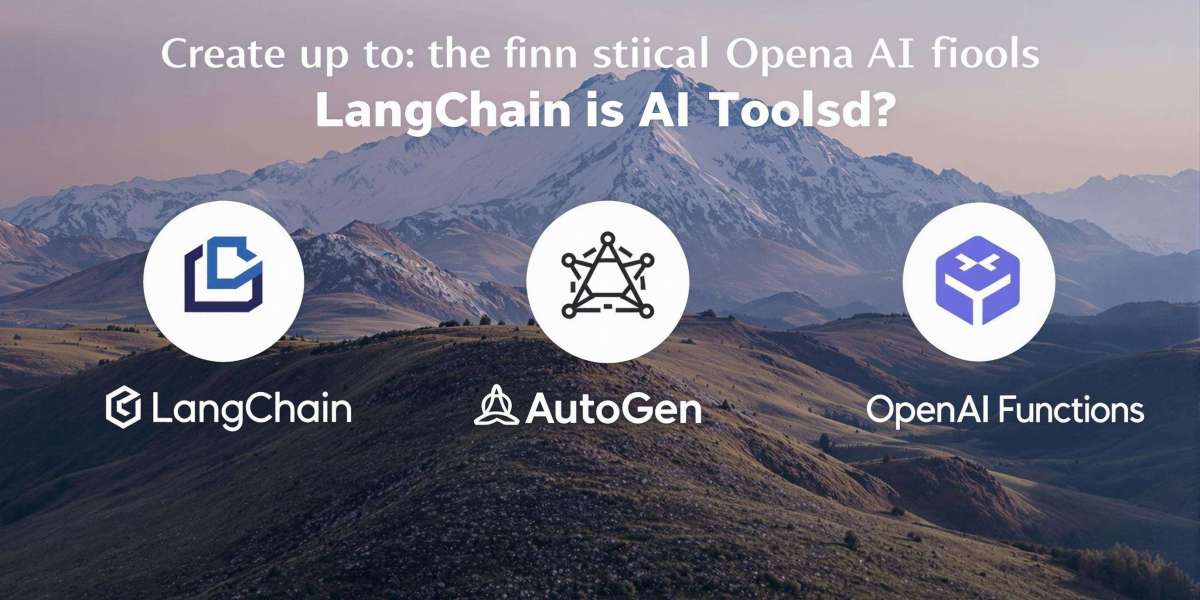Artificial intelligence is evolving rapidly, and one of its most promising innovations is the development of AI agents, intelligent systems capable of reasoning, problem-solving, and taking autonomous actions on behalf of users or businesses. If you’ve been researching how to build an AI agent, you’ve likely come across several frameworks designed to simplify and streamline the development process.
Among the most popular tools in this space are LangChain, AutoGen, and OpenAI Functions. Each offers its own unique strengths, and choosing the right one depends heavily on your project goals, technical experience, and desired outcomes.
Understanding AI Agent Frameworks
Before exploring the differences between these frameworks, it's important to understand what makes AI agents different from traditional chatbots or rule-based systems.
AI agents are designed to handle tasks independently whether it's drafting emails, conducting market research, automating customer support, or interacting with APIs and databases. To perform such tasks, AI agents rely on frameworks that help them manage memory, use external tools, maintain context, and follow logical reasoning to achieve goals.
That’s where LangChain, AutoGen, and OpenAI Functions play an essential role in helping developers turn language models into fully functional AI agents.
LangChain: Modular AI Workflows Made Simple
LangChain is one of the most widely adopted frameworks for building AI agents. It allows developers to create structured workflows that connect language models to a variety of tools, databases, and APIs.
LangChain is particularly powerful for building Retrieval-Augmented Generation (RAG) systems, knowledge bots, and applications where information retrieval and response accuracy are critical. If your AI agent needs to handle data-heavy queries or integrate with multiple third-party services, LangChain is a reliable and flexible choice.
AutoGen: Multi-Agent Collaboration Simplified
AutoGen, developed by Microsoft, focuses on enabling multiple AI agents to work together and communicate both with humans and each other. This approach is ideal for complex use cases where different agents need to handle specific roles within a larger system.
AutoGen is especially useful for scenarios like automated research, dynamic problem-solving, and multi-step workflows where collaboration between agents can improve performance and efficiency.
OpenAI Functions: Simplified Tool-Calling with LLMs
OpenAI Functions is a lightweight and efficient way to extend the capabilities of large language models like GPT-4. Rather than manually writing long chains of logic or designing multi-agent systems, developers can define functions that the AI can call when it recognizes a relevant task in the conversation.
OpenAI Functions is best suited for businesses looking for a straightforward way to integrate AI into existing products, especially when the goal is to automate specific actions or access real-time data through API calls.
Choosing the Right Framework for Your AI Agent
Selecting the right framework for your AI agent depends on your project’s needs.
If your goal is to create a complex, data-driven agent that integrates seamlessly with multiple services, LangChain offers robust support for modular pipelines. If you're exploring collaboration between multiple AI agents or building autonomous research tools, AutoGen is likely the better fit. For businesses looking for fast and simple LLM-powered task automation, OpenAI Functions delivers a streamlined solution.
Final Thoughts
The future of software is shifting toward intelligent systems that can reason, learn, and act — and AI agents are at the center of this transformation. Whether you're planning a simple assistant or an advanced autonomous platform, the framework you choose will shape the success of your AI project.
If you’re interested in learning more about the development process, be sure to explore our full guide on how to build an AI agent for deeper insights.








